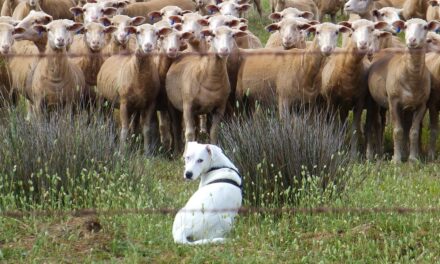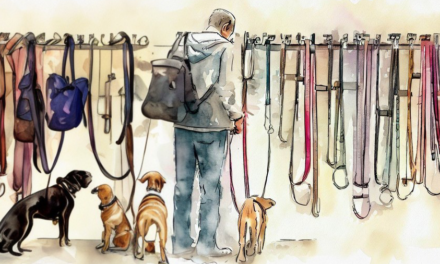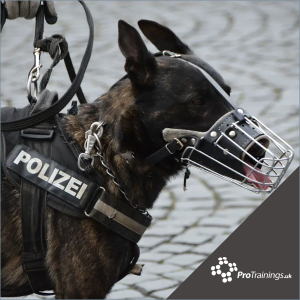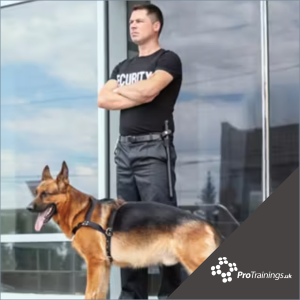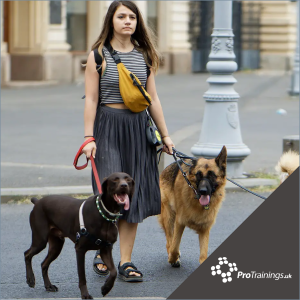As dog lovers and dog business owners, we know how essential our roles are in ensuring our furry friends’ wellbeing. But, there’s a particular issue we often encounter that not only affects the dogs but has a substantial impact on our businesses too: separation anxiety in dogs. This behavioral challenge isn’t just about dealing with a sad pup; it’s about understanding a complex psychological issue that affects a significant number of dogs and has a ripple effect on various dog-related businesses.
Firstly, why is addressing separation anxiety so important? Imagine being gripped by fear and distress every time your loved ones leave home. For dogs with separation anxiety, that’s their reality. It’s an overwhelming, distressing experience that severely impacts their quality of life. Moreover, it can lead to destructive behaviors, which bring additional challenges for us as dog business professionals.
To understand the full scope of this issue, it’s important to delve into how separation anxiety affects different types of dog businesses. Whether you’re a dog walker dealing with an anxious dog who’s terrified of being left by their owner, or a boarding facility owner coping with a dog barking non-stop out of fear and anxiety, separation anxiety can significantly complicate your work. As for dog trainers and veterinarians, separation anxiety can make routine sessions a struggle. And let’s not forget pet retailers, who often interact with frustrated owners seeking solutions for their anxious dogs.
This article aims to provide you with a comprehensive understanding of separation anxiety in dogs and provide practical, effective strategies to manage it, tailored specifically for dog business owners like you. So, whether you’re a dog sitter, a dog walker, a vet, or even a pet retailer, this article will offer insights and tools to help you deal with dogs facing separation anxiety. Remember, as professionals in the dog care field, our goal is not only to run successful businesses but also to ensure the emotional and physical well-being of the dogs under our care. So, let’s take a journey together to better comprehend and manage separation anxiety in dogs.
What is Separation Anxiety in Dogs?
Separation Anxiety is a distressing emotional condition where a dog becomes anxious, scared, or overly stressed when they’re separated from their loved ones or left alone. You can think of it as a type of panic attack that a dog experiences due to the fear of being alone. And yes, it’s as heartbreaking as it sounds.
Just as in humans, anxiety in dogs can have various causes. It may be triggered by a traumatic event, such as a frightening experience during a thunderstorm while the dog was alone, or it could be the result of changes in their environment, like moving homes or changing families. Some dogs might even develop separation anxiety when their routine changes significantly, such as when their owner goes back to work after a long period at home.
Now, let’s look at how to recognize the signs of separation anxiety. Dogs can’t tell us they’re scared or anxious, so it’s important we learn to identify the signs. Symptoms often begin just before or soon after the dog is left alone, and might include excessive barking or howling, destructive behavior, pacing, and in more severe cases, self-harm or escape attempts. And yes, if you’ve been wondering, those “accidents” in the house might not be accidents at all, but rather a symptom of separation anxiety.
It’s also crucial to note that separation anxiety should not be confused with other behavioral issues. While an overly energetic dog might also cause destruction when left alone, this does not necessarily mean they have separation anxiety. It’s important to determine whether their actions are due to anxiety or just a lack of exercise and stimulation. The key difference? Separation anxiety symptoms usually occur only when the dog is separated from their owner or left alone, whereas other behavioral issues might occur at any time.
Understanding the nature of separation anxiety and learning to recognize its signs are the first steps to managing this issue effectively. With this knowledge, we can now explore how it impacts various dog businesses and strategies to alleviate this anxiety.
How does Separation Anxiety Affect Different Types of Dog Business?
How does Separation Anxiety Affect Dog Walkers?
As we delve into how separation anxiety impacts different types of dog businesses, let’s start with dog walkers.
Now, dog walking might seem like a straightforward gig, but toss in a pup with separation anxiety and you’re looking at a whole new set of challenges!
Picture this: you arrive at a client’s home for a routine walk, but the moment you step out the door, their dog begins to howl, whimper, or even tries to bolt back home. That’s separation anxiety in action, and it can turn a peaceful walk into a tug-of-war session.
What’s more, dogs with separation anxiety may behave unexpectedly, increasing the risk of accidents or mishaps during the walk. So, it’s essential to have strategies in place to manage these situations.
The first strategy is good communication. Keeping an open dialogue with the dog’s owner can help you prepare for and handle these situations more effectively. Owners may already have techniques or cues they use to calm their dog, which can be invaluable during walks.
Another useful strategy is gradual familiarization. By starting with short walks and slowly increasing their length, you help the dog understand that walks with you are safe and that their owner will return.
In addition, try to keep the dog engaged during the walk. Bringing along their favorite toy or introducing training games can keep their mind off their anxiety. A fun, interactive walk not only helps the dog feel more secure, but also makes your job as a dog walker easier and more enjoyable.
Remember, every dog is unique, and what works for one might not work for another. The key is patience, understanding, and a willingness to adapt to each dog’s needs. As dog walkers, we are not just responsible for their physical exercise, but also for their emotional well-being during the walks. Let’s keep this in mind as we move onto how separation anxiety affects other dog businesses, and explore the strategies they can adopt to manage it.
How does Separation Anxiety Affect Dog Sitters and Boarding Facilities?
Now, let’s turn our attention to dog sitters and boarding facilities. These businesses provide an invaluable service for owners who need to travel or are unable to care for their dogs temporarily. However, for a dog with separation anxiety, these situations can be incredibly stressful.
Imagine being dropped off in an unfamiliar place, surrounded by new people and possibly other dogs. Even for the most sociable and outgoing dogs, this can be a daunting experience. Now, add separation anxiety to the mix, and you’ve got a potential cocktail of stress and panic. It’s easy to see why managing separation anxiety is crucial in these environments.
So, what can dog sitters and boarding facilities do to help anxious dogs? The first step is to create an environment that is both soothing and stimulating. Dogs with separation anxiety need reassurance that they are safe, and a calm, quiet space can provide this. Consider creating separate areas for dogs to relax and feel secure, away from the hustle and bustle of the other pets. Using calming aids like pheromone diffusers or soothing music can also help reduce anxiety.
At the same time, dogs with separation anxiety benefit from mental stimulation to distract them from their worries. Incorporating activities that the dogs enjoy can keep their minds busy and help them feel more relaxed. Interactive toys, puzzle feeders, or fun play sessions can provide this stimulation and help them channel their anxiety into positive, constructive behaviors.
In addition, building a strong relationship with the dog’s owner is crucial. The more information you have about a dog’s routines, likes, and dislikes, the better equipped you are to make their stay as comfortable and stress-free as possible.
Running a dog sitting or boarding facility can be a challenging task, especially when dealing with dogs suffering from separation anxiety. But with the right strategies and an understanding approach, you can ensure that these dogs are not only cared for but that they also feel safe, secure, and at ease. And as we’ll discuss next, similar strategies can be adapted by other dog business types as well.
How does Separation Anxiety Affect Dog Trainers?
Next up on our journey are dog trainers, the dedicated professionals who work closely with dogs and their owners to overcome behavioral challenges. Of course, these challenges can sometimes include the tricky business of separation anxiety.
As a dog trainer, you’re not only teaching a dog new commands or tricks; you’re also working to change their behavioral responses and patterns. When it comes to a dog with separation anxiety, this task takes on a whole new dimension. After all, you’re dealing with an emotional response rooted in fear and distress. This isn’t about sitting or staying; it’s about helping a dog feel safe and secure when they’re alone.
So, how can dog trainers address separation anxiety in their training sessions?
The key here is to use desensitization and counter-conditioning techniques. Desensitization involves gradually exposing the dog to the situation that causes their anxiety—in this case, being alone—but in a controlled and manageable way. It’s like dipping your toes in the water before taking the plunge. For example, you might start with very short periods of separation, gradually increasing the duration over time.
Counter-conditioning, on the other hand, is about changing the dog’s emotional response to the trigger. Instead of associating their owner’s departure with fear and anxiety, we want them to associate it with something positive. This could be achieved by offering a special toy or treat that they only get when they’re alone, turning the departure into a positive event.
These techniques require patience, consistency, and time, but the results can be life-changing for both the dog and their owner. But it’s not just the trainer’s responsibility. A crucial part of the process is teaching the owner these techniques, so they can continue the work at home. After all, dog training isn’t just about the dog; it’s about creating a strong, understanding bond between the dog and their human.
Being a dog trainer means being a beacon of hope for many dog owners struggling with their pet’s behavior. When dealing with separation anxiety, it’s important to remember that you’re helping to alleviate a dog’s distress and fear, making their world a safer, happier place. And that, dear trainers, is a feat to be proud of. And this understanding and compassion also extend to our next group of dog professionals, the pet retailers.
How does Separation Anxiety Affect Pet Retailers
Moving along in our exploration of dog businesses, let’s not forget about our friends in pet retail. Now, you might be thinking, “Pet retailers? How does separation anxiety relate to selling pet supplies?” But remember, as part of the dog care industry, pet retailers play an important role in supporting dog owners, and that includes those grappling with their pets’ separation anxiety.
As a pet retailer, you interact with a wide array of customers—new puppy parents, experienced dog owners, and everything in between. But among these customers, there’s a particular group that needs your guidance more than you might think: those dealing with their dogs’ separation anxiety.
Recognizing these customers and understanding their needs is the first step. They might be the ones looking at calming aids or asking about solutions for excessive barking. Or they might be those tired-looking folks telling stories of their dog’s destructive behavior or accidents in the house when left alone. These customers aren’t just looking for products; they’re looking for solutions, advice, and perhaps a bit of reassurance.
So, how can you assist these customers? Your role here is to guide them towards products and solutions that can help alleviate their dogs’ anxiety. For example, a comforting toy or blanket could provide the dog with a source of comfort when alone. Puzzle toys or treat-dispensing toys can keep the dog engaged, reducing anxiety by diverting their attention.
Anxiety wraps, which apply gentle pressure, can often help dogs feel more secure, much like swaddling a baby. Calming supplements or treats can also provide some relief, but it’s important to remind customers that these should be used in conjunction with other solutions, not as a standalone treatment.
Being a pet retailer isn’t just about selling products; it’s about being a helpful resource for pet owners. You have the opportunity to make a real difference in the lives of dogs and their owners. After all, a dog with less anxiety is a happier dog, and a happier dog means a happier customer. As we’ll see in our next section, this ethos of care and support applies just as strongly to our final group of dog professionals—the veterinarians.
How does Separation Anxiety Affect Vets?
Last but certainly not least in our exploration of dog businesses are the veterinarians. These professionals hold a pivotal role in a pet’s life, providing medical care and invaluable advice to pet owners. And yes, you guessed it, this also includes supporting owners in managing their dogs’ separation anxiety.
As a veterinarian, you have a unique opportunity to identify potential cases of separation anxiety. Owners may bring in their dogs for what seems like unrelated issues: digestive problems, skin conditions, or unusual changes in behavior. But with a keen eye and thorough understanding of separation anxiety, you might realize these are stress-induced symptoms linked to anxiety. You could be the first to bring this to the owner’s attention, guiding them towards the appropriate help.
So, what can you do when dealing with a case of separation anxiety? Collaboration is key. As a vet, your role extends beyond identifying the issue. It’s about working together with the dog owner to create a comprehensive plan for managing their pet’s anxiety. This could involve recommending a professional dog trainer or behaviorist, suggesting products that could help, or even discussing the option of medication in severe cases.
In addition, educating the owner about separation anxiety is a crucial part of the process. The more an owner understands their dog’s anxiety, the better equipped they’ll be to handle it. This isn’t just about explaining the issue; it’s about fostering empathy and patience. As the saying goes, “Knowledge is power,” and in this case, it’s the power to change a dog’s life for the better.
Being a veterinarian means being an advocate for a pet’s wellbeing, physically and emotionally. When it comes to separation anxiety, you’re not just treating a condition; you’re helping to alleviate fear and distress, to transform a dog’s quality of life. That’s a profound impact, one that resonates not only in the clinic but in every moment of a pet’s life thereafter.
As we’ve seen throughout this exploration, separation anxiety affects many aspects of the dog care industry, and each business type has a role to play in managing it. The strategies might differ, but the goal remains the same: to help dogs live happier, healthier lives. Whether you’re a dog walker, a dog sitter, a trainer, a retailer, or a vet, your work can make a world of difference for dogs with separation anxiety.
Strategies for Managing Separation Anxiety in Dogs
Preparing the Environment
Now that we’ve dived into how separation anxiety can impact different types of dog businesses, let’s shift our focus to some general strategies anyone can use to help manage this condition. No matter what role you play in a dog’s life, these tips can be useful tools in your arsenal.
First and foremost, it’s essential to create a safe and comforting space for dogs experiencing separation anxiety. Think of it as their personal haven where they can retreat when they’re feeling anxious. This could be a particular room, a dog crate, or even just a designated spot with their favorite bed or blanket. The goal is to create an environment where they feel secure and at ease.
While creating this safe space, consider the overall atmosphere of the environment. Is it calm and quiet, or is it hectic and noisy? A peaceful ambiance can go a long way in helping an anxious dog feel more relaxed. You might even want to play some soft, calming music or nature sounds to help soothe their nerves.
But it’s not just about tranquility. Incorporating calming aids can also be incredibly helpful. There’s a wide range of products available, from pheromone diffusers and calming treats to anxiety wraps. These can all contribute to creating an environment that helps to alleviate the dog’s anxiety.
In addition to creating a comforting environment, providing enriching activities is another vital strategy. Boredom can often exacerbate separation anxiety, and keeping a dog’s mind engaged can distract them from their worries. Interactive toys or puzzle feeders are a great way to do this, providing mental stimulation while also offering a fun distraction.
Remember, our goal here is to make the dog’s alone time less about anxiety and more about positive experiences. Whether you’re creating a cozy corner for them to retreat to or offering a fun new toy to keep them occupied, these small changes can make a big difference in a dog’s life. And as we’ll see in our next section, there are even more strategies we can utilize to manage separation anxiety.
Gradual Desensitization
Having set the stage with a comforting environment and enriching activities, let’s move on to the next strategy: gradual desensitization. Now, don’t be put off by the fancy term; it’s simpler than it sounds. The main idea here is to gradually expose the dog to the situation that causes anxiety—in this case, being alone—but in small, manageable doses that won’t trigger a full-blown anxiety response.
For dogs with separation anxiety, the act of their human leaving can often be the biggest trigger. To help them cope, we can start by introducing gradual departures and arrivals. This could mean practicing stepping out for just a few seconds at first, then coming back in without making a big fuss. Gradually, you can increase the time you’re away, always being mindful of the dog’s reaction and taking a step back if it’s too much for them.
This process takes time and patience, but remember, the goal isn’t to rush to the finish line; it’s to help the dog feel comfortable and secure when they’re alone.
Alongside gradual departures, it’s equally important to build a positive association with your leaving. We want the dog to see your departure not as something scary, but as a cue that something good is going to happen. This could be as simple as giving them a special treat or toy that they only get when you’re leaving. Over time, they’ll start to associate your departures with positive experiences, rather than something to fear.
Keep in mind that every dog is unique, and what works for one may not work for another. But by introducing gradual departures and arrivals and associating departures with positive experiences, we can help ease a dog’s separation anxiety one step at a time.
Enrichment and Mental Stimulation
Building on our strategies for managing separation anxiety, it’s time to dive into the power of enrichment and mental stimulation. Just like us humans, dogs need mental exercise to keep their minds sharp and satisfied. It’s particularly crucial for dogs dealing with separation anxiety as it gives them a positive focus and helps to burn off that nervous energy.
Let’s start with incorporating mental stimulation into their daily routines. The beauty of this is that it doesn’t need to be complicated or time-consuming. It can be as simple as changing up your walking route so your dog can explore new scents, or spending a few minutes training them on a new trick. You could even make mealtime more interesting by using a feeding toy or puzzle, which also slows down their eating—bonus!
Moving on to playtime, this is where you can really let your creativity shine. Engaging dogs in interactive play can do wonders for their mental health. Think beyond the usual fetch and tug-of-war—although, those are great too—and consider games that make your dog think. Hide-and-seek, whether with you or their favorite toy, can be a lot of fun and a great mental workout for your dog.
Puzzle toys take this to the next level, requiring your dog to figure out how to get to the tasty treat hidden inside. These can keep your dog occupied for quite some time, making them an excellent option for when you need to leave your dog alone. Remember that special treat we mentioned when building positive associations with departures? A puzzle toy filled with their favorite snack could be just the thing.
Remember, a mentally stimulated dog is a happier dog, and a happier dog is less likely to be overwhelmed by anxiety. By incorporating mental stimulation into your dog’s daily life and engaging them in interactive play, you’re not only enriching their life but also taking important steps in managing their separation anxiety.
Behavior Modification Techniques
Let’s forge ahead in our toolbox of strategies with a technique that often gets overlooked: behavior modification. It might sound technical, but essentially it’s about shaping a dog’s behavior through training. For dogs struggling with separation anxiety, this can be a real game-changer.
Firstly, let’s talk about positive reinforcement. This method is all about rewarding good behavior. In the case of separation anxiety, this could mean praising or giving a treat when the dog remains calm as you put on your shoes or grab your keys—actions that might usually trigger anxiety. Over time, this can help to change their reaction to these triggers, helping them to stay calm even when you’re getting ready to leave.
Now, it’s important to note that severe separation anxiety can be deeply ingrained and might require more than just positive reinforcement. This is where professional guidance comes in. Behaviorists and trainers who specialize in separation anxiety can provide personalized training plans that address the root of the problem. They’ll use a variety of techniques—like desensitization and counter-conditioning, which we discussed earlier—to help the dog gradually overcome their anxiety.
Reaching out for professional help can be a big step, but it’s one that can make a significant difference. Remember, there’s no ‘one size fits all’ solution for separation anxiety. Every dog is unique and deserves an approach tailored to their specific needs.
Whether you’re using positive reinforcement at home or seeking the help of a professional, behavior modification techniques can be incredibly effective in managing separation anxiety. They allow us to help dogs overcome their anxiety in a positive, supportive way, guiding them towards a happier and more relaxed life.
Collaborating with Pet Parents
Rounding up our strategies for managing separation anxiety, we come to a crucial element that can make or break our efforts: collaborating with pet parents. This is particularly relevant for dog business owners, as the most effective strategies require a team effort between you and the dog’s family.
Educating owners about separation anxiety is the first step. Some pet parents might not even realize that their dog is struggling with this condition, mistaking the symptoms for simple misbehavior. Helping them understand what separation anxiety is, why it occurs, and how it impacts their beloved furry friend can be a real eye-opener. This understanding is crucial, as it’s the pet parents who will carry on implementing the strategies at home.
But education is only part of the picture. As dog business owners, we also need to provide support, resources, and follow-up assistance. That might mean recommending articles, books, or online resources about managing separation anxiety. It could also involve suggesting appropriate products, like calming aids or puzzle toys, that can help.
Follow-up assistance is another key factor. Checking in with pet parents, seeing how things are going, and offering advice based on their experiences can be invaluable. It’s important for pet parents to know they’re not alone in this journey, and your ongoing support can make a huge difference.
As we’ve seen throughout this discussion, managing separation anxiety in dogs is a complex task that involves multiple strategies. But by combining these strategies and working closely with pet parents, we can make a real impact on dogs’ lives, helping them to feel safer, happier, and less anxious when they’re alone.
Some other thoughts on Separation Anxiety
As we dive deeper into the realm of managing separation anxiety, it’s vital to appreciate the wide range of experiences and insights from dog business owners who have faced these challenges head-on. After all, theory is one thing, but the practical application can often bring unexpected twists and turns.
I’ve had the privilege of chatting with several dog business owners who’ve generously shared their insights and experiences. One common theme? Persistence is key. When dealing with separation anxiety, setbacks are not uncommon. But as these seasoned pros have shared, staying the course, adjusting strategies as needed, and celebrating small victories can lead to significant progress over time.
There’s the story of Bella, a feisty Beagle, for instance. Her separation anxiety was so severe that her owners were at their wit’s end. It was through consistent training, a commitment to creating a calming environment, and the help of a skilled dog trainer that Bella started to show signs of improvement. Now, she can comfortably spend short periods alone without showing signs of distress. Stories like Bella’s remind us that success might not be immediate, but it’s indeed possible with patience, dedication, and the right strategies in place.
But each dog is unique, bringing along their own challenges and circumstances. Some dogs might have underlying medical issues that exacerbate their anxiety. Others might be rescue dogs with traumatic pasts that make separation anxiety more challenging to address. In such cases, a customized approach, often involving a team of professionals, can make a world of difference. Remember, what works for one dog might not work for another, and that’s okay. The goal is to find what works best for each individual dog.
Dealing with separation anxiety in dogs can certainly be a complex process. But by listening to professional insights, learning from case studies, and being flexible in our approach to unique challenges, we can be better equipped to help our furry friends.
Conclusion
And so we’ve reached the tail end of our discussion on managing separation anxiety in dogs. What a journey it’s been! From understanding what this condition is and how to recognize it, to exploring the unique considerations for different dog businesses and the varied strategies that can help manage it. We’ve covered quite a lot of ground.
The strategies we’ve talked about—preparing a comforting environment, introducing gradual desensitization, offering mental stimulation and interactive play, employing behavior modification techniques, and working closely with pet parents—can all play significant roles in helping a dog navigate separation anxiety.
To all you dog business owners out there, remember, you are in a unique position to make a difference. Whether you’re a dog walker, a sitter, a trainer, a retailer, or a vet, you can play a crucial part in identifying and addressing separation anxiety. Don’t underestimate the impact you can have on a dog’s quality of life.
However, it’s also important to recognize when professional help is needed. If a dog’s separation anxiety is severe or isn’t improving with tried-and-tested strategies, don’t hesitate to seek the help of a professional behaviorist or trainer. This isn’t a sign of defeat—far from it. It’s about doing what’s best for the dog, and sometimes, professional help is exactly what’s needed.
In conclusion, managing separation anxiety in dogs is a team effort, one that requires understanding, patience, dedication, and often, a healthy dose of creativity. But the reward—a happier, less anxious dog who trusts that their human will return—is well worth the effort.
Thank you for joining us on this journey into the world of managing separation anxiety. Remember, every step we take to understand and address this condition can make a world of difference in the lives of the dogs we love and care for. Keep up the great work, and here’s to happier, calmer times ahead for our furry friends!


